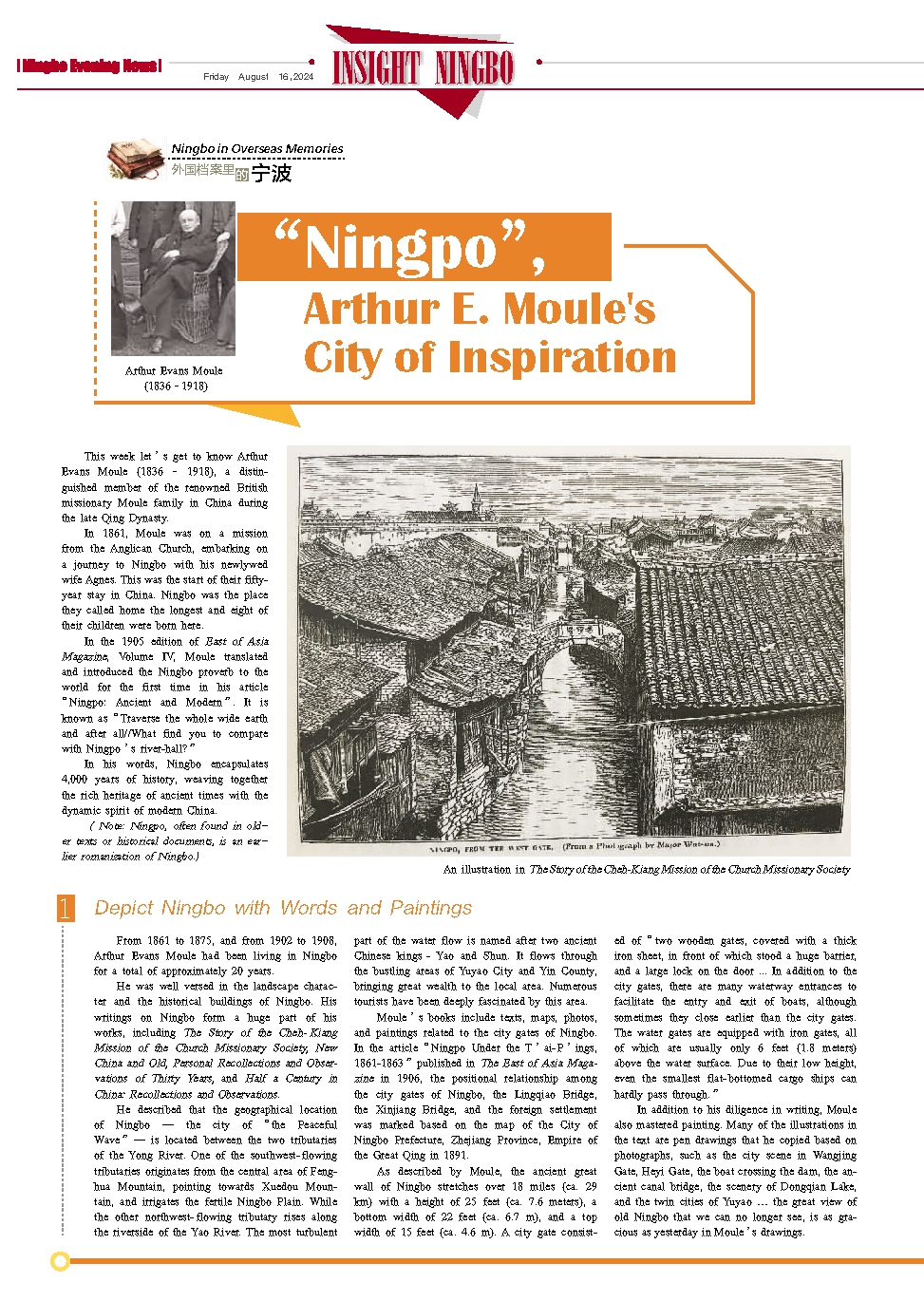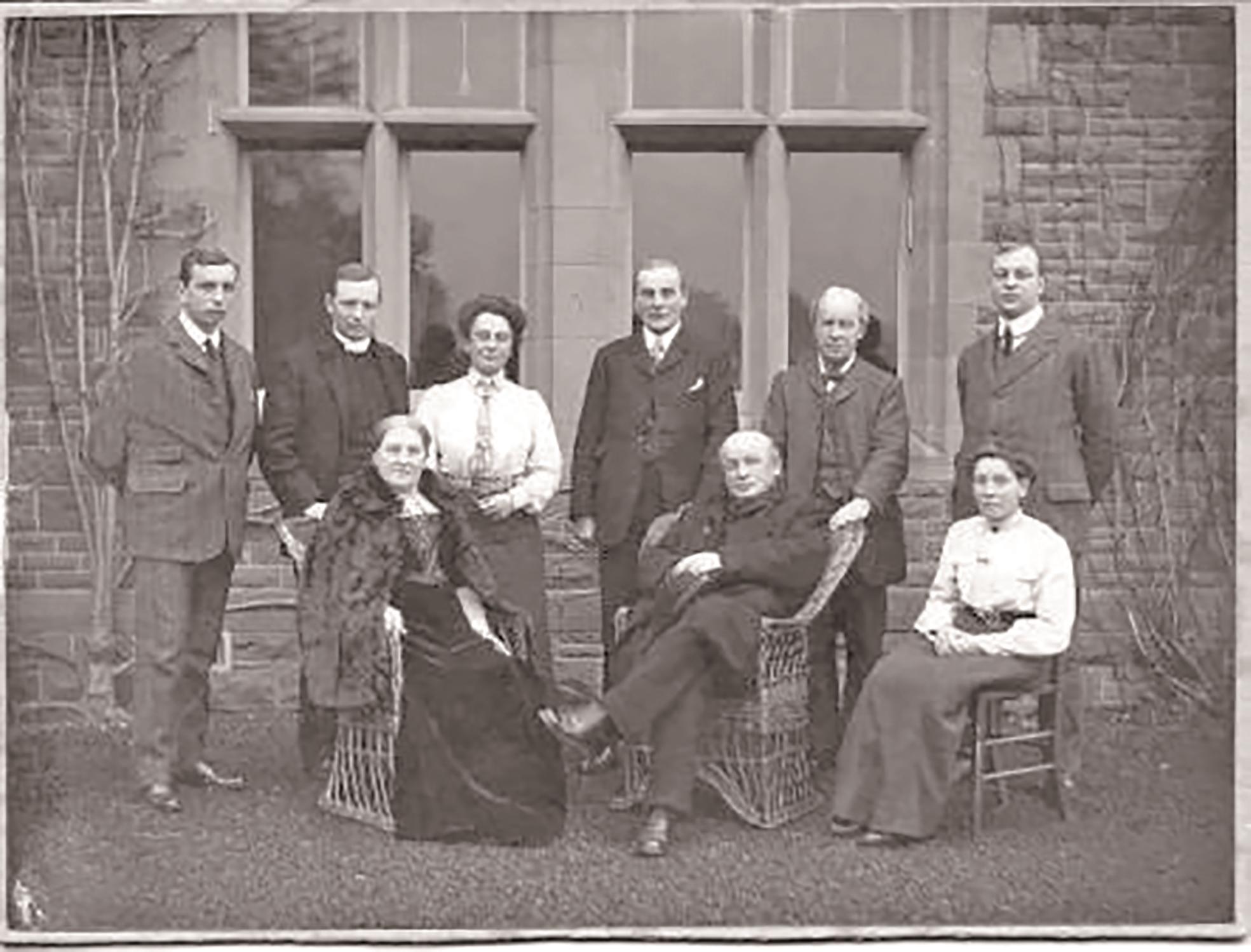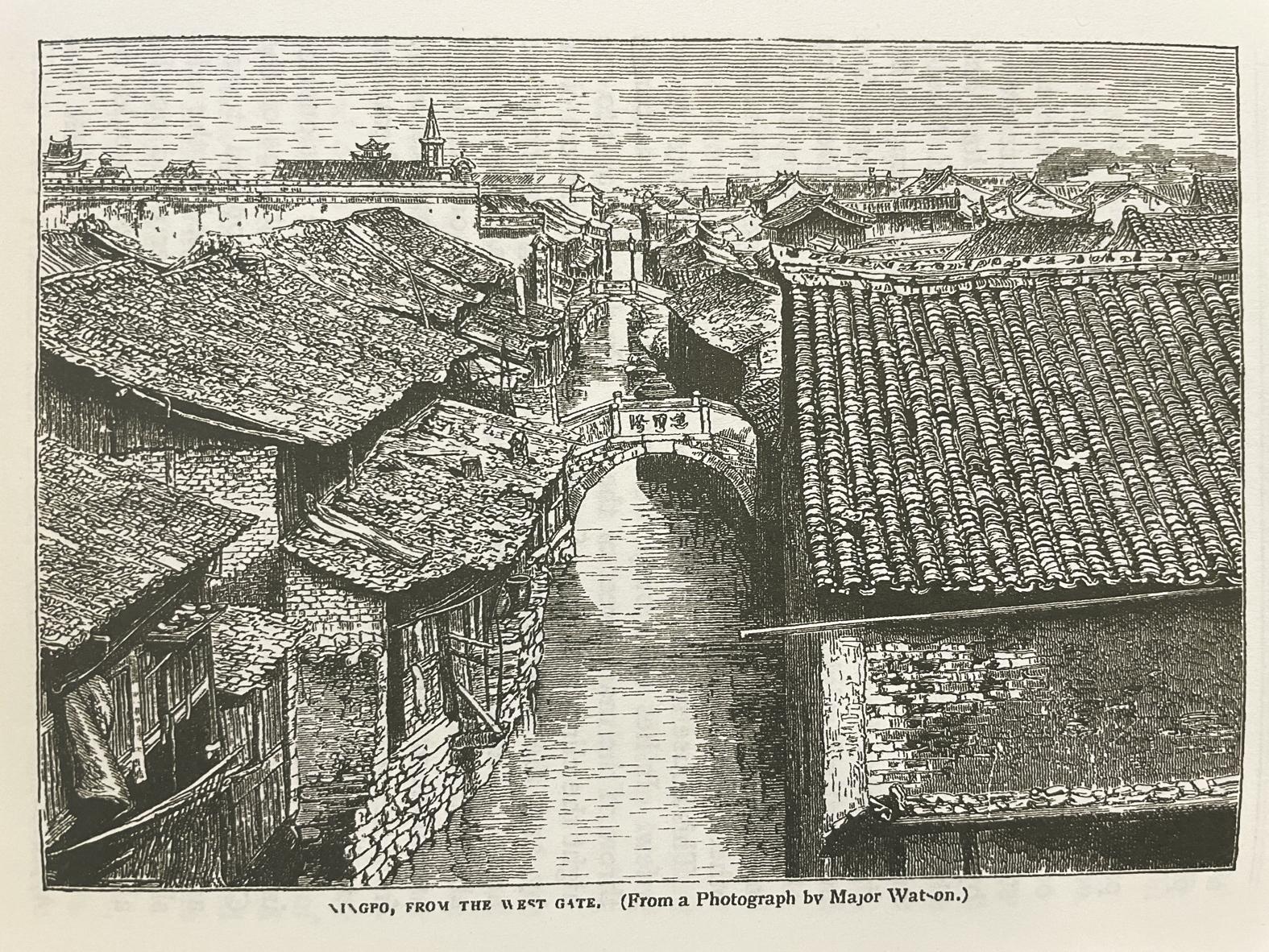This week let’s get to know Arthur Evans Moule (1836–1918), a distinguished member of the renowned British missionary Moule family in China during the late Qing Dynasty.
In 1861, Moule was on a mission from the Anglican Church, embarking on a journey to Ningbo with his newlywed wife Agnes. This was the start of their fifty-year stay in China. Ningbo was the place they called home the longest and eight of their children were born here.
In the 1905 edition of East of Asia Magazine, Volume IV, Moule translated and introduced the Ningbo proverb to the world for the first time in his article “Ningpo: Ancient and Modern”. It is known as “Traverse the whole wide earth and after all//What find you to compare with Ningpo’s river-hall?”
In his words, Ningbo encapsulates 4,000 years of history, weaving together the rich heritage of ancient times with the dynamic spirit of modern China.
( Note: Ningpo, often found in older texts or historical documents, is an earlier romanization of Ningbo.)
Depict Ningbo with Words and Paintings
From 1861 to 1875, and from 1902 to 1908, Arthur Evans Moule had been living in Ningbo for a total of approximately 20 years.
He was well versed in the landscape character and the historical buildings of Ningbo. His writings on Ningbo form a huge part of his works, including The Story of the Cheh-Kiang Mission of the Church Missionary Society, New China and Old, Personal Recollections and Observations of Thirty Years, and Half a Century in China: Recollections and Observations.
He described that the geographical location of Ningbo — the city of “the Peaceful Wave” — is located between the two tributaries of the Yong River. One of the southwest-flowing tributaries originates from the central area of Fenghua Mountain, pointing towards Xuedou Mountain, and irrigates the fertile Ningbo Plain. While the other northwest-flowing tributary rises along the riverside of the Yao River. The most turbulent part of the water flow is named after two ancient Chinese kings - Yao and Shun. It flows through the bustling areas of Yuyao City and Yin County, bringing great wealth to the local area. Numerous tourists have been deeply fascinated by this area.
Moule’s books include texts, maps, photos, and paintings related to the city gates of Ningbo. In the article “Ningpo Under the T’ai-P’ings, 1861-1863” published in The East of Asia Magazine in 1906, the positional relationship among the city gates of Ningbo, the Lingqiao Bridge, the Xinjiang Bridge, and the foreign settlement was marked based on the map of the City of Ningbo Prefecture, Zhejiang Province, Empire of the Great Qing in 1891.
As described by Moule, the ancient great wall of Ningbo stretches over 18 miles (ca. 29 km) with a height of 25 feet (ca. 7.6 meters), a bottom width of 22 feet (ca. 6.7 m), and a top width of 15 feet (ca. 4.6 m). A city gate consisted of “two wooden gates, covered with a thick iron sheet, in front of which stood a huge barrier, and a large lock on the door ... In addition to the city gates, there are many waterway entrances to facilitate the entry and exit of boats, although sometimes they close earlier than the city gates. The water gates are equipped with iron gates, all of which are usually only 6 feet (1.8 meters) above the water surface. Due to their low height, even the smallest flat-bottomed cargo ships can hardly pass through.”
In addition to his diligence in writing, Moule also mastered painting. Many of the illustrations in the text are pen drawings that he copied based on photographs, such as the city scene in Wangjing Gate, Heyi Gate, the boat crossing the dam, the ancient canal bridge, the scenery of Dongqian Lake, and the twin cities of Yuyao … the great view of old Ningbo that we can no longer see, is as gracious as yesterday in Moule’s drawings.




